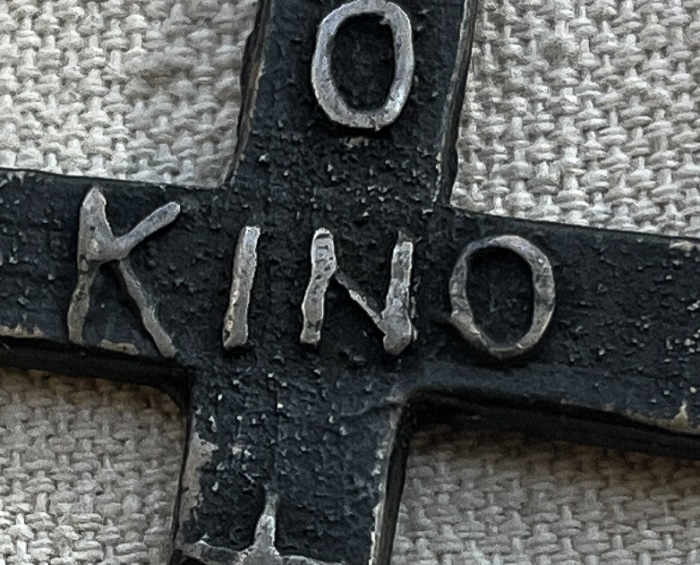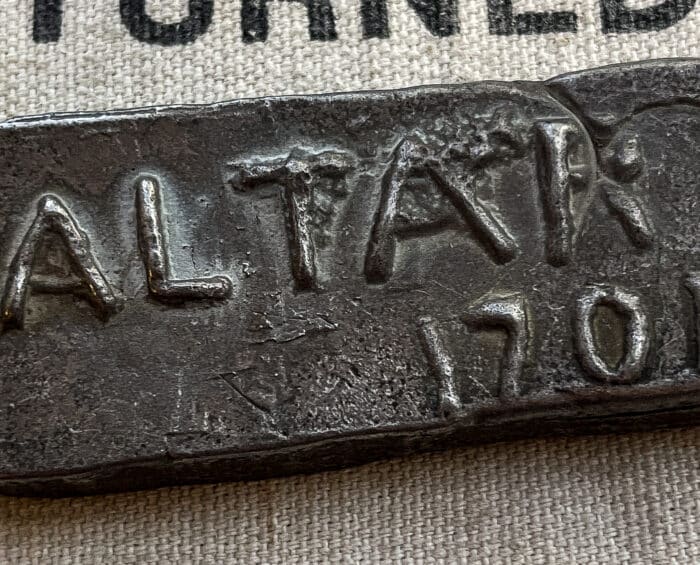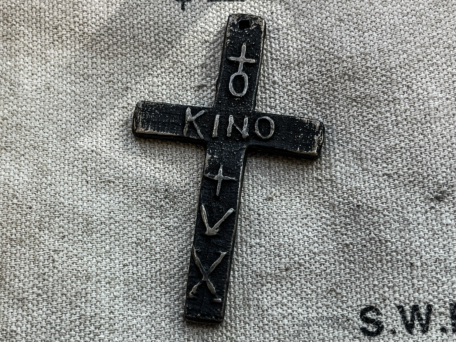The Story of Padre Kino Silver Bars
Silver has always been a valuable and sought-after commodity, and its popularity remains unchanged today. It is fascinating to learn about the many silver stories and treasures hidden worldwide, and one such anecdote revolves around Padre Kino’s silver bar hoard.
So, if you want to learn more about this Jesuit priest and his legacy, this guide will take you through the fascinating history of the Kino Bars, from their discovery to modern times. Buckle up, and let’s get started.
Who was Padre Kino?
Eusebio Francisco Chini, aka Padre Kino, was a Jesuit missionary born in Italy in 1645. In 1681, Padre Kino was sent to Mexico, where he worked as a missionary and explorer in what is now Sonora, Mexico.
Also known as The Missionary on Horseback, he explored the country tirelessly, traveling more than 30,000 km across Mexico and the southwestern United States. Besides introducing Catholicism to the locals, Padre Kino also worked on civil and social development in these sun-baked lands.
More precisely, Eusebio Chini was a cartographer, astronomer, historiographer, and pioneer explorer. At the same time, he was a cowboy and rancher. In March 1711, Padre Kino died in Magdalena, Mexico. A crypt with his skeletal remains is among Mexico’s national monuments.
So, what does a Jesuit priest have to do with silver bars and ingots? Here’s where the story gets interesting.
What are Padre Kino’s Silver Bars?
Padre Kino’s silver bars are said to be silver ingots made by the indigenous people of Sonora, Mexico, during the 17th century. According to legend, these bars were discovered in a cave near the Sonoran town of Magdalena de Kino.
Of course, people who found the treasure named the silver bars after the man who was instrumental in the region’s history, Padre Kino.
However, the legend of the Kino Bars is fascinating, with many unanswered questions and controversies. And regardless of their authenticity, the bars remain highly valued by collectors and investors. Why? What’s the trick?
Padre Kino Bars Explained: Specifications
The story of the Padre Kino silver hoard dates back to the 1970s when a collector and dealer of Native American artifacts named John Roy claimed to have received a hoard of silver bars attributed to Father Kino in Yuma, Arizona. The story quickly spread among collectors and investors, with Padre Kino silver ingots becoming a sought-after commodity.
Yet, the authenticity of the Padre Kino silver ingots is a controversial topic, endlessly debated among historians and collectors.
Namely, there is no standard size or weight for Padre Kino silver ingots, as they are not official bullion products. In other words, the Padre Kino silver ingots vary in size and weight. For instance, an unusual piece sold in November 2011 with a date of 1691 weighs only 353.9 grams.
The Padre Kino silver ingots typically have a rectangular shape with rounded edges and corners. They often feature the initials “FK” or the words “Padre Kino” stamped into the surface, along with the weight and purity.
As we said, Padre Kino’s silver ingots range from a few ounces to several pounds. Allegedly, some of the larger pieces are said to weigh up to 70 pounds, although these are rare.
Composition-wise, Padre Kino silver ingots are said to comprise 999 fine silver, the standard purity for investment-grade bullion products. However, the actual composition is hard to verify, as certificates of authenticity or other documentation don’t accompany many of the bars on the market.
Overall, the majority of Padre Kino silver bars are unique in shape and size. They are rectangular, measuring around 4.5 inches long, 1.5 inches wide, and 1 inch thick, weighing between 750 and 800 grams. The bars feature high-quality silver with a purity between 92 to 98 percent.
Who discovered Padre Kino’s silver bars?
The discovery of Padre Kino’s silver bars is shrouded in mystery, so it’s unclear who first brought them to public attention. According to some, the treasure hunters who found the silver bars were a group of cowboys, while others claim it was Milton Rose, a miner, treasure hunter, and prospector.
In the 1950s, Rose was traveling through Sonora, Mexico, and heard rumors of a hidden treasure. He researched Kino’s history, studied old maps, and talked to locals who might know something. After much searching, he eventually discovered a hidden cave with over 3,000 silver bars.
After making the discovery, Rose kept it a secret for many years. But in the 1970s, he offered Padre Kino’s silver bars to collectors, primarily John Roy, who quickly recognized their numismatic value.
The Effects of the Discovery on Treasure Hunting
The discovery of the Kino Bars significantly affected the world of treasure hunting, with many people dedicating their time and resources to finding other lost relics and treasures.
Moreover, Kino silver bars created a frenzy among silver collectors, who saw the bars as rare and valuable. The allure of Padre Kino bars and ingots led to many expeditions to Sonora, Mexico, and the surrounding areas.
In addition, the discovery of the Kino Bars helped fuel the public’s interest in treasure hunting and numismatics, increasing the number of people collecting rare coins and bullion.
Are Padre Kino’s Bars a Hoax or Not?
As we mentioned, there has been much debate among experts over the authenticity of the Kino Bars. Some believe the bars are legitimate, while others think they are fake. For instance, the bars’ unique shape, size, and high silver content suggest they could be genuine.
However, many experts have found inconsistencies in the bars’ markings and claim they could be counterfeit. Moreover, compelling evidence indicates that Padre Kino’s bars are a hoax.
After all, no historical evidence suggests Padre Kino ever produced silver bars or engaged in mining or metallurgical activities. So, as with any numismatic or collectible item, exercising caution and conducting thorough research is essential before investing!
Thus, while they may look like genuine historical artifacts, the bars’ numerous inconsistencies in composition and physical characteristics make it highly unlikely they are authentic.
What Does Modern Science Say?
Modern science has played a crucial role in analyzing the authenticity of Padre Kino’s silver hoard. In 2009, the Arizona Historical Society commissioned a scientific study to test their composition.
The study utilized non-destructive X-ray fluorescence (XRF) spectrometry to determine the elemental composition of the bars. The results showed that the bars contained high impurity levels, inconsistent with silver pieces from the 17th and 18th centuries.
On top of that, researchers at the University of Arizona analyzed the bars using scanning electron microscopy (SEM) and energy-dispersive X-ray spectroscopy (EDS). The results revealed that the bars contained modern tool marks and were cast in a mold, suggesting they did not originate from Padre Kino’s period.
These scientific analyses provide compelling evidence that the Padre Kino silver hoard is a modern forgery, and we should disregard the bars as a valuable historical artifact.
Final Thoughts
In conclusion, the story of the Kino Bars is fascinating, filled with mystery and controversy. Whether they are authentic relics from a bygone era or clever forgeries remains open for debate in the numismatic and silver-collecting communities.
After all, Padre Kino’s silver bars and ingots have captured the imagination of treasure hunters and silver enthusiasts alike. That’s why they continue to be sought after by those who believe in their historical and monetary value.


